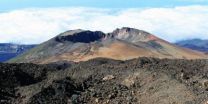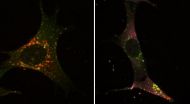(Press-News.org) The Cuban Missile Crisis took place 50 years ago this October, when US and Soviet leaders pulled back from the very brink of nuclear war. This was the closest the world has come to nuclear war, but exactly how close has been a matter of some speculation. The conflict, itself, has been analyzed and interpreted, but the number and types of nuclear weapons that were operational have not. According to fresh analysis available today in the Bulletin of the Atomic Scientists, published by SAGE, senior experts calculate the nature of weapons capabilities on both sides, and write that the situation was even more perilous than history has previously acknowledged.
In their latest issue of "Nuclear Notebook", Robert S. Norris, senior fellow with the Federation of American Scientists (FAS) in Washington, DC, and Hans M. Kristensen, the director of the FAS's Nuclear Information Project, revisit key information that was available to military and civilian officials in both the United States and the Soviet Union at the height of the crisis, during October and November of 1962.
This detail on the number and status of weapons—known as the nuclear order of battle—has remained widely overlooked by many authors, experts, and researchers over the past five decades. Several types of US and Soviet nuclear weapons were operational, some on high levels of alert and readily available to use. Until now, writers have tended to home in on certain types of weapons in their accounts, leaving valuable detail on others in the margins. The authors believe that only when the status of each weapon system available has been examined in detail can the true nature of the crisis be assessed.
To accurately calculate the likelihood of a full-scale nuclear war in October 1962, the authors write, the nuclear order of battle must be clarified. This can be broken down into three categories:
Local forces, which were the Soviet and US nuclear weapons in and around Cuba;
Regional forces, which were both the US tactical weapons in Europe that could hit targets in the Soviet Union, as well as the Soviet weapons in western USSR that were aimed at European targets;
Global forces, which included the US strategic nuclear weapons—intercontinental ballistic missiles (ICBM), submarine-launched ballistic missiles (SLBM), and long-range bombers—that could reach the Soviet Union, and, of course, the Soviet strategic nuclear weapons that could reach the United States.
In terms of local forces and unknown to the United States, 158 Soviet nuclear warheads of five types were already in Cuba by the time the military blockade was imposed on October 24th. Still, 50 years later, it is unknown how ready they were or whether they were specifically targeted at US cities. US Joint Chiefs of Staff considered using nuclear weapons during a Cuban invasion, but by October 31st had decided against this.
In Europe, the United States had approximately 500 nuclear weapons at its disposal to attack targets in the western Soviet Union. With its 550 nuclear weapons, the Soviet Union had a slightly larger arsenal to hit European targets.
At a global level, when the Cuban Missile Crisis unfolded, the nuclear arms race was still relatively immature. Even so, Soviet Premier Nikita Khrushchev and his military advisers knew that US strategic nuclear forces outnumbered theirs by a ratio of 17 to 1 in 1962.
"Volumes have been written about the crisis," says Norris. "Even so, in the tens of thousands of pages that interpret and analyze this conflict, there are essential details missing—specifically, a comprehensive nuclear order of battle." He goes on to conclude that, "examining in detail the status of each weapon system shows the true nature of the crisis— and that it was even more serious and dangerous than previously thought."
### "The Cuban Missile Crisis: A Nuclear Order of Battle, October and November 1962" by Robert S. Norris and Hans Kristensen published 12 October 2012 in The Bulletin of the Atomic Scientists. On October 24th, Norris will deliver a presentation on the nuclear order of battle at the Wilson Center in Washington, DC. More details can be found here: http://www.wilsoncenter.org/event/cuban-missile-crisis-nuclear-order-battle
The article will be free to access for a limited time here: http://bos.sagepub.com/
The Bulletin of the Atomic Scientists informs the public about threats to the survival and development of humanity from nuclear weapons, climate change, and emerging technologies in the life sciences. The Bulletin was established in 1945 by scientists, engineers, and other experts who had created the atomic bomb as part of the Manhattan Project. http://bos.sagepub.com/
SAGE is a leading international publisher of journals, books, and electronic media for academic, educational, and professional markets. Since 1965, SAGE has helped inform and educate a global community of scholars, practitioners, researchers, and students spanning a wide range of subject areas including business, humanities, social sciences, and science, technology, and medicine. An independent company, SAGE has principal offices in Los Angeles, London, New Delhi, Singapore and Washington DC. www.sagepublications.com
New weapons detail reveals true depth of Cuban Missile Crisis
2012-10-12
ELSE PRESS RELEASES FROM THIS DATE:
GMES for Europe
2012-10-12
The potential of GMES for crisis management and environmental monitoring is highlighted in a new publication with users demonstrating the importance of Earth observation data to European regions.
The joint ESA-NEREUS (Network of European Regions Using Space Technologies) publication is a collection of articles that provide insight into how the Global Monitoring for Environment and Security (GMES) programme is being used in new applications and services across Europe.
The articles, prepared by regional end-users, research institutes and industry providers from 17 different ...
Development of 2 tests for rapid diagnosis of resistance to antibiotics
2012-10-12
With their excellent sensitivity and specificity, the use of these extremely efficient tests on a world-wide scale would allow us to adapt antibiotic treatments to the individual's needs and to be more successful in controlling antibiotic resistance, particularly in hospitals. These works were published in September in two international reviews:
Emerging Infectious diseases and The Journal of Clinical Microbiology.
These diagnostic tests will allow rapid identification of certain bacteria that are resistant to antibiotics and hence:
Allow us to better adapt the treatment ...
Scientists identify trigger for explosive volcanic eruptions
2012-10-12
Scientists from the University of Southampton have identified a repeating trigger for the largest explosive volcanic eruptions on Earth.
The Las Cañadas volcanic caldera on Tenerife, in the Canary Islands, has generated at least eight major eruptions during the last 700,000 years. These catastrophic events have resulted in eruption columns of over 25km high and expelled widespread pyroclastic material over 130km. By comparison, even the smallest of these eruptions expelled over 25 times more material than the 2010 eruption of Eyjafjallajökull, Iceland.
By analysing ...
The body's own recycling system
2012-10-12
Almost everything that happens inside a cell, including autophagy, is tightly regulated on a biochemical level. Like that, the cell makes sure that processes only take place when they are needed and that they are shut off when the need has expired. "Inside the cell, there exists a network of molecules. Between them, information is constantly being exchanged," says Schmitz, head of the research group "Systems-oriented Immunology and Inflammation Research" at HZI, who also holds a chair at the Otto von Guericke University in Magdeburg. "In a way, it looks like a big city ...
The worst noises in the world: Why we recoil at unpleasant sounds
2012-10-12
In a study published in the Journal of Neuroscience and funded by the Wellcome Trust, Newcastle University scientists reveal the interaction between the region of the brain that processes sound, the auditory cortex, and the amygdala, which is active in the processing of negative emotions when we hear unpleasant sounds.
Brain imaging has shown that when we hear an unpleasant noise the amygdala modulates the response of the auditory cortex heightening activity and provoking our negative reaction.
"It appears there is something very primitive kicking in," says Dr Sukhbinder ...
Kidney grafts function longer in Europe than in the United States
2012-10-12
Kidney transplants performed in Europe are considerably more successful in the long run than those performed in the United States. While the one-year survival rate is 90% in both Europe and the United States, after five years, 77% of the donor kidneys in Europe still function, while in the United States, this rate among white Americans is only 71%. After ten years, graft survival for the two groups is 56% versus 46%, respectively. The lower survival rates compared to Europe also apply to Hispanic Americans, in whom 48% of the transplanted kidneys still function after ten ...
Neuroscientists from Louisiana Tech University to present at international conference
2012-10-12
RUSTON, La. – Dr. Mark DeCoster, the James E. Wyche III Endowed Professor in Biomedical Engineering at Louisiana Tech University, will lead a team of Louisiana Tech neuroscientists in presenting a lecture at the Society for Neuroscience's (SfN) annual meeting, October 15 in New Orleans.
The lecture titled, "Randomization of submaximal glutamate stimulus to interpret astrocyte effect on calcium dynamics," will be featured as part of Neuroscience 2012 – SfN's annual meeting that provides the world's largest forum for neuroscientists to debut research and network with colleagues ...
'Invisibility' could be a key to better electronics
2012-10-12
CAMBRIDGE, Mass. — A new approach that allows objects to become "invisible" has now been applied to an entirely different area: letting particles "hide" from passing electrons, which could lead to more efficient thermoelectric devices and new kinds of electronics.
The concept — developed by MIT graduate student Bolin Liao, former postdoc Mona Zebarjadi (now an assistant professor at Rutgers University), research scientist Keivan Esfarjani, and mechanical engineering professor Gang Chen — is described in a paper in the journal Physical Review Letters.
Normally, electrons ...
Prostate cancer: Curcumin curbs metastases
2012-10-12
Powdered turmeric has been used for centuries to treat osteoarthritis and other illnesses. Its active ingredient, curcumin, inhibits inflammatory reactions. A new study led by a research team at Ludwig-Maximilians-Universität (LMU) in Munich now shows that it can also inhibit formation of metastases.
Prostate cancer is one of the most prevalent malignancies in the Western world, and is often diagnosed only after metastatic tumors have formed in other organs. In three percent of cases, these metastases are lethal. A research team led by PD Dr. Beatrice Bachmeier at LMU ...
Scientists uncover diversion of Gulf Stream path in late 2011
2012-10-12
At a meeting with New England commercial fishermen last December, physical oceanographers Glen Gawarkiewicz and Al Plueddemann from the Woods Hole Oceanographic Institution (WHOI) were alerted by three fishermen about unusually high surface water temperatures and strong currents on the outer continental shelf south of New England.
"I promised them I would look into why that was happening," Gawarkiewicz says.
The result of his investigation was a discovery that the Gulf Stream diverged well to the north of its normal path beginning in late October 2011, causing the warmer-than-usual ...


